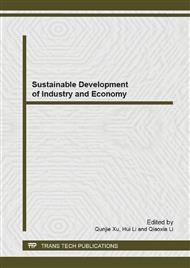p.305
p.310
p.315
p.322
p.327
p.334
p.338
p.343
p.351
Evaluation of Signalized Intersection Service Level in the Traffic Impact Assessment
Abstract:
Traffic Impact Assessment focuses on analysis and evaluation of the traffic flow generated by the proposed project impact on the road network in the future, through comparing the sections,intersection and other transportation infrastructure indexes such as traffic flow and road vehicle capacity, evaluate whether the traffic system can meet the increased traffic demand. In this paper, make the delay time and the road saturation as the evaluation index, studies the influence scope of the key signal intersection service level, in order to assess the impact of new projects on the signalized intersection. Cited Haikou province Hongzhou center as an example, based on the investigation of the traffic flow, calculate the time delay and road saturation to analyze the service level.
Info:
Periodical:
Pages:
327-333
Citation:
Online since:
December 2013
Authors:
Price:
Сopyright:
© 2014 Trans Tech Publications Ltd. All Rights Reserved
Share:
Citation:


